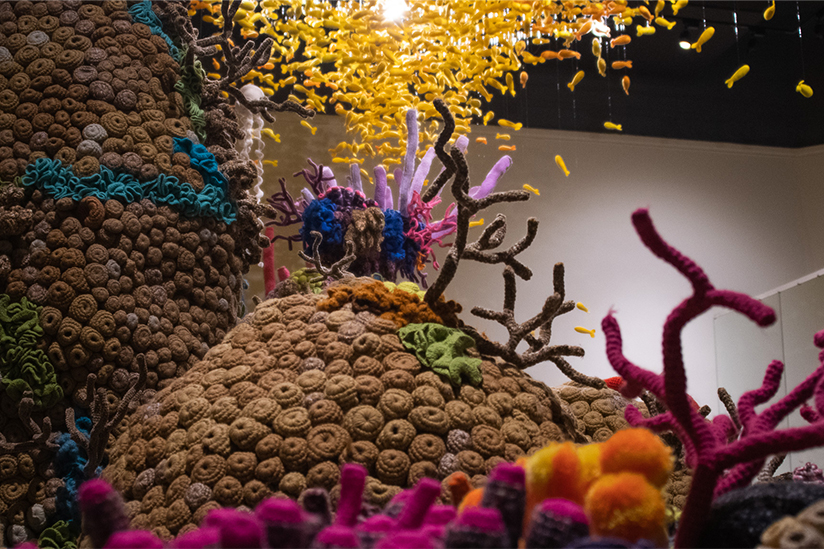Marking Indonesian artist Mulyana’s first solo show in Los Angeles is the newest exhibition at the USC Fisher Museum of Art. “Mulyana: Modular Utopia” centers around climate change and the relationship between human beings and nature. Mulyana uniquely conveys his take on how human beings have affected the natural world around them through the contrasting galleries included in his exhibition.
Through his mode of art, knitting, Mulyana creates knit modules of underwater scenes that both bring to life the beauty he sees in nature and the harm he has witnessed human pollution do to these underwater habits. His work attempts to reconcile how human beings can peacefully coexist with the beauty the natural world provides without damaging it.
When viewers first walk into the exhibition, two massive installations of gray crocheted coral reefs directly face the entrance, forcing viewers to immediately grapple with the detrimental effects human pollution has already had on nature, such as turning vibrant coral reefs into graying habitats. Flanking either side of the gray coral reefs are some of Mulyana’s much more colorful and vibrant costume artworks. On one side sits “Si Koneng” (2022), a bright yellow knitted costume that represents Mulyana’s belief that life is “articulated through movement.” On the other side, is another costume artwork, “Adikara” (2020). Composed of vibrant greens, yellows, blues and pinks, the costume takes inspiration from coral reefs and is meant to signify “the singular human ability to choose between good and evil.”
While these costumes are intricate and impressive, the true crux of Mulyana’s message on balancing environmentalism and humanitarianism is best presented by the two opposing galleries that are hidden deeper within the exhibition: “Satu” and “Ocean Wonderland.” These two galleries are meant to be immersive art installations, allowing viewers to engage in two contrasting experiences.
As viewers wander deeper into the left side of the exhibition, they enter the world of “Satu,” a title meaning “one” or “fullness” in Mulyana’s native language, Indonesian. The installation consists of a sea of white knitted jellyfish suspended from the ceiling, which drift overhead a white 30-foot-long 3D-printed whale skeleton. Inspired by the way coral reefs turn white under stress, Mulyana uses the all-white landscape and skeleton to call attention to the threat human carelessness poses to nature’s vibrancy and life. Standing underneath the fall of white jellyfish and faced with the imposing skeleton, viewers are asked to make peace with the damage that has already been done to underwater habitats and asked to do better.
